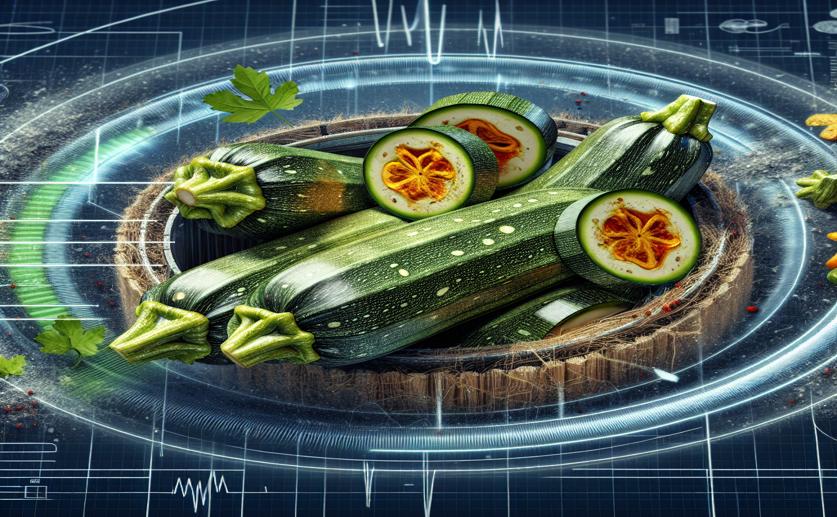
Tracking Changes in Stored Seasoned Zucchinis with NMR Technology
Jenn Hoskins
29th February, 2024

Image Source: Natural Science News, 2024
Key Findings
- Study in Italy shows both compostable and plastic trays keep zucchinis fresh for 35 days at 4°C
- Key freshness indicators like lactate and acetate were stable in both packaging types
- NMR metabolomics is effective for monitoring food quality and shelf life
VegetablesBiochemPlant Science
References
Main Study
1) Monitoring the metabolite content of seasoned zucchinis during storage by NMR-based metabolomics.
Published 29th February, 2024
https://doi.org/10.1016/j.heliyon.2024.e25976
Related Studies
2) Commercial Bio-Packaging to Preserve the Quality and Extend the Shelf-Life of Vegetables: The Case-Study of Pumpkin Samples Studied by a Multimethodological Approach.
3) Metabolomic Markers of Storage Temperature and Time in Pasteurized Milk.
4) 2,3-Butanediol synthesis from glucose supplies NADH for elimination of toxic acetate produced during overflow metabolism.



 15th February, 2024 | David Palenski
15th February, 2024 | David Palenski